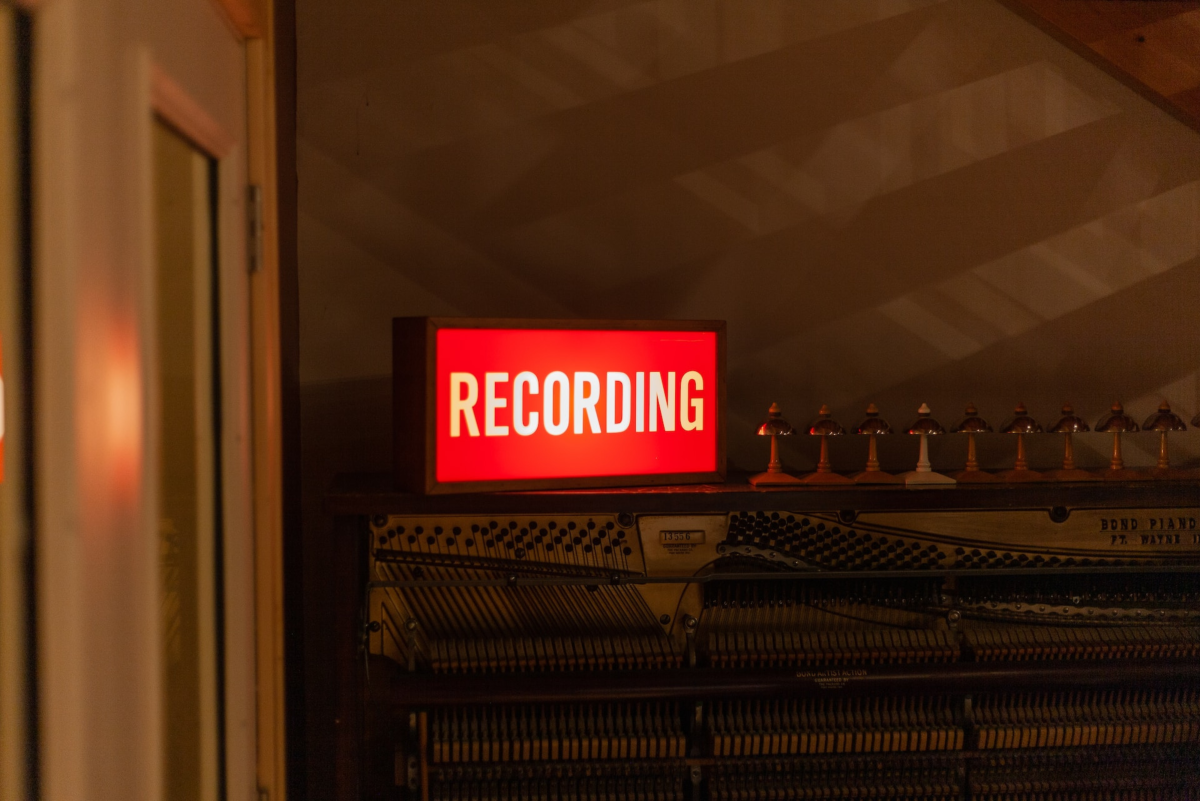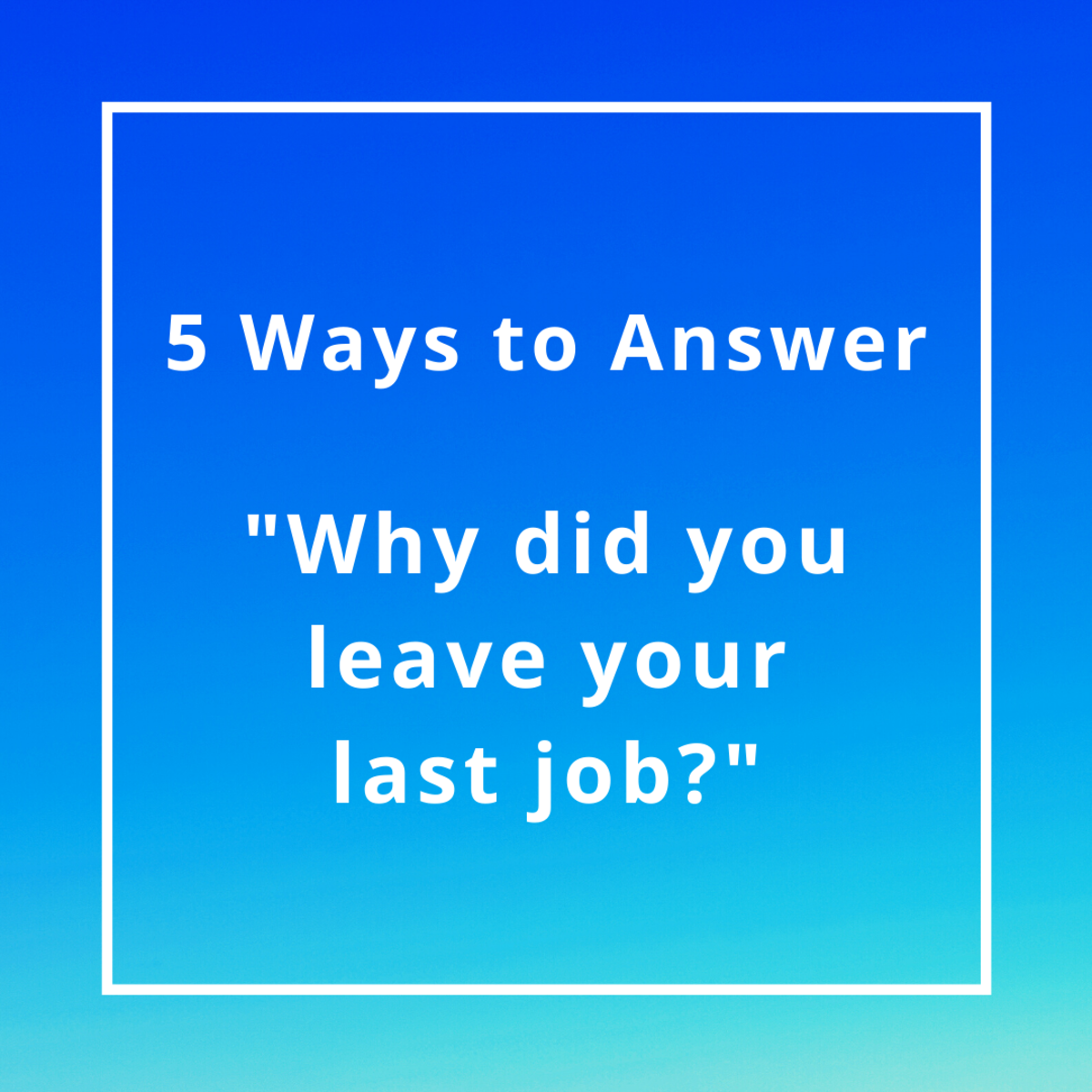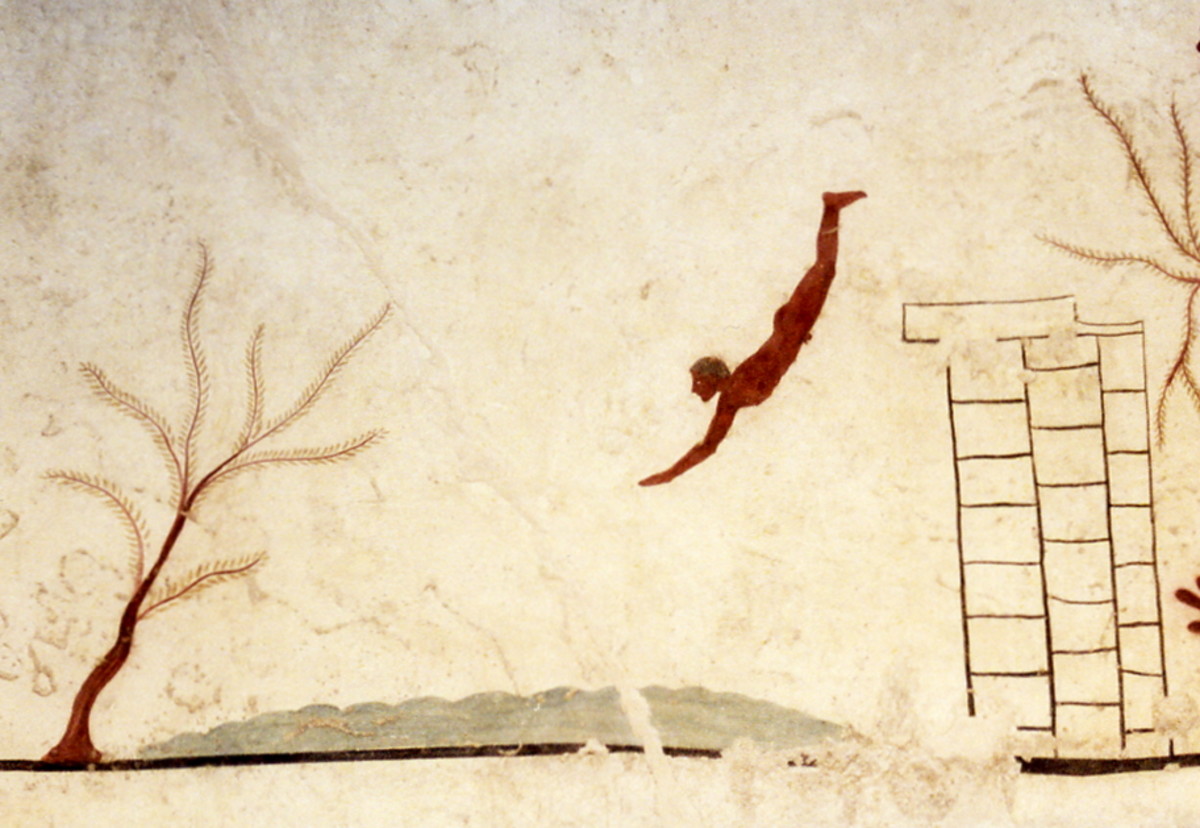Interview of a Commercial Diver -- Part 2
Interviewing a professional diver
I did an interview with a commercial diver that worked off the shore of southern California in the Channel Islands area a couple of months ago. This is the second part of that interview, and I will again be asking him about his occupation and his very interesting experiences while doing this. I hope you all enjoy reading this, as much as I did writing it.
His name is Bruce, and to remind you of a couple of things, he has worked in this field for about 20 years, and his family for about 5 generations also did commercial diving and fishing in this area. So here is Bruce;
When you go out to work, do you go to the same places, or do you move around and how do you choose a place that will be a good one?
When we go out, the first thing that comes to mind are the old places that we have gone to before. We stop and take a portable air supply and an underwater scooter and we scout around looking for the places we harvested before. If the area is good and the urchins have grown back to a good size, we come back up and throw the anchor and get our equipment, like a picking tool, and a basket and dive there.
When you say you take a portable air supply, you are referring to an air tank, is that what you use when you are working, and how do you know the areas that you worked in before and where they are? It would look to the average person that the ocean is all the same from the surface?
Untrue--we use global positioning satellites to mark our spots when we find good ones, they are called way points, so we can find them again. It is similar to a car's GPS system. We do not use air tanks to work, we have hoses that are about 600 to 900 feet long connected to an air compressor that pumps air down to us. It is the same air that we breath on top but the compressor compresses it into a volume tank, then through filters and the hose to us by way of our regulator.
The world to us looks a certain way when we travel we see mountains, valleys and so on, when your gps system takes you to a place, does it tell you what it looks like underwater, and can you describe to us what the underwater world does look like?
No, it does not tell us what it looks like, it takes us within 50 ft. of a certain point, and then for the most part the kelp beds stay the same because they are growing from a certain reef and do not move much. So we depend on our memory from there to take us where we were and the reefs we harvested. Remembering reefs is allot like remembering a mountain or valley or other landmarks on land. When you get to a familiar area, you remember. Urchins grow on reefs or anywhere where the kelp grows. They attach themselves to rocks where the current makes the kelp flow and reach them. They grab onto the kelp with their spines, and work it around until it is down under them where their mouth is.
When you say that the urchins attach themselves to the rocks, does that mean that they stay in that spot, or do they move around?
No, they move around by letting go of the spot they are, usually because of a lack of food, which also makes them very light, and the current then floats them around and they drift just off the bottom until they find another spot where the seaweed and kelp is more plentiful. They also use the spines near the bottom to help crawl.
When you find a reef, what is it usually made of?
It is made of rock, and anything else that the eco-world has to add to it like snails, barnacles, sand, sand worms, crusty sand formations made of the excretions of the sand worms. It breaks away very easily, but it adds to the reef by attracting life.
When you first dive in and say hit the reef at about 50 ft. when you look around you describe to me what the land around it looks like?
As you swim down, you can see if the water is clear that day, a lot of life. You will see fish, seaweed beds, maybe seals. As you look out and around you, you might see shelves where the reefs have a plateau. You might see a valley where the reef drops off and goes down deeper. It is comparable to the land, except that underwater life is found instead of trees and plants you will see kelp beds. One thing that is very different, is that how far you can see . You can see on a good day between 30 to 100 ft. On a bad day you can maybe see your hands up to 5 or 10 ft. We do not like to dive on those days, because you cannot see what is around you and that is dangerous.
On a Rock
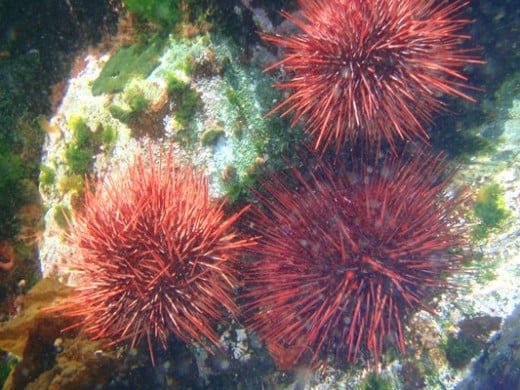
Red Urchin
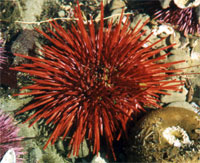
caviar of the sea
Plants or Animals?
We have talked before about urchins, and we know that people eat the roe or eggs from them. What I would like you to explain to us, is what exactly they are, plants or animals?
The are a spineless animal. They do not have a brain, and they are neither, or rather both sexes.
Could you tell us about what kind of animals you have come into contact with, and maybe one of your most exciting encounters?
I have come into contact with sea lions, very large fish, small reef sharks, and giant black sea bass. This is where one of my most interesting encounter was. I was picking urchins, when I had a feeling something was very near me. I turned around to find a giant black sea bass, about 300 to 400 pounds just over my shoulder. I then kept trying to swim away from him to continue to pick but every time I did, I would find him right at the same place, right over my shoulder. It was his way of non-violently letting me know that it was his territory and was attempting to drive me out of it. I took my basket and shoved it at him, trying to push him away from me, but it had the opposite effect, making him angry and to the point of not leaving me alone and forcing me to get out of the water. He was chasing me around and around my bag, and he would be right next to my head and face every time I tried to pick an urchin. He began bumping my float ball around as if it were a small beach ball which is big enough to float a 600 to 900 pound bag of urchins to the surface. He did not hurt me, but he would not let me do anything except leave. He was intimidating to say the least.
Have you ever had any experiences with any sharks, or to be specific any great white sharks?
Yes, on my birthday one year, we were diving In about 10 to 20 ft of water. From behind me came about an 9 ft. reef shark. It startled me badly, and I was too ignorant to be afraid of him and I followed him to see where he was going. I lost him, but when I went back to my bag, he appeared again, and this worried me badly. He started getting aggressive making runs right at me, and I swam back to the boat. The other diver was still in the water, so I left my bag at the boat and went to find the other diver in case he had not seen the shark. He was almost right under the boat, and I swam down to him and gave him a hand signal that there was a shark. He shrugged me off and continued working. Still I couldn't leave him there alone, because I felt he was being dense. As I was climbing up on the boat, he came within 3 ft of me. This caused the other diver to finally take notice, and he came up too, and we moved the boat to a different location.
This has been very informative and interesting, and I was wondering if we could in a future time do a part three asking you some questions I have on some different subjects, but still regarding your work?
Sure, I wouldn't mind a bit.




